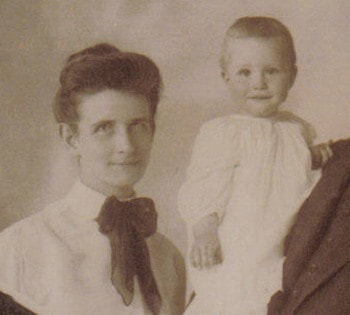Before the appearance of Lake Cowichan’s first bonafide restaurant, a lady named Mrs. Allen operated a small eatery in the village known as The Shack. For a couple of years during the summer months, she eked out a living selling ice cream and “afternoon tea” from The Shack. It was a tough go, since there were few residents who could afford to waste money on such delicacies. By 1917, the business and Mrs. Allen were gone.
Bill Pourier, who operated a commercial stage line between Cowichan Lake and Duncan in the early years, also opened the village’s first restaurant (although the word restaurant may be overstating it a bit). It was around 1919 when Pourier opened the place near the corner of present day Wellington Avenue and a narrow gravel trail now known as North Shore Road (in the vicinity of today’s A&W Restaurant).
By all accounts, the site was well chosen, as the nearby train station (now the local museum) and Scholey’s Store and Post Office attracted customers, including locals and train passengers who might need a drink or a meal. As well, there were passengers for Pouriers’ stage line (re: daily trips to and from Duncan) that also patronized the restaurant. It seems that Pourier had a good head for business and made use of opportunity. The building that held the restaurant had additional space that the Pouriers rented out for events such as dances and community gatherings.
During the same era, an interesting character named Archie Tiderington (grandfather of Lake Cowichan-raised Eileen Hildebrandt) opened the Union Restaurant. The Union was situated on a hill overlooking the train station. (In later years the hill was bulldozed down to street level with present day A&W Restaurant and May’s Store and Chinese Take-Out now occupying the flattened land). Tiderington’s restaurant had two large windows that captured a beautiful view of the lake, which was visible from the elevated height.
The scenery was nice, but it made no difference one way or another to Tiderington who, like Pourier, could always find a way to make a buck regardless of the circumstances or location. While Tiderington’s stage vehicles were kept near his restaurant, Pourier’s were located down the road (North Shore) to approximately where the Forest Worker Memorial Park now stands.
Eventually, Pouriers’ restaurant was demolished by fire while Tiderington’s lasted a few more years before he closed it and sold the building.
A future column will feature more on Tiderington, who in spite of being a bit of an enigma to the locals, held great influence over the affairs of the village during the early years.
Research, Kaatza Station Museum (The Trevor Green Papers)
